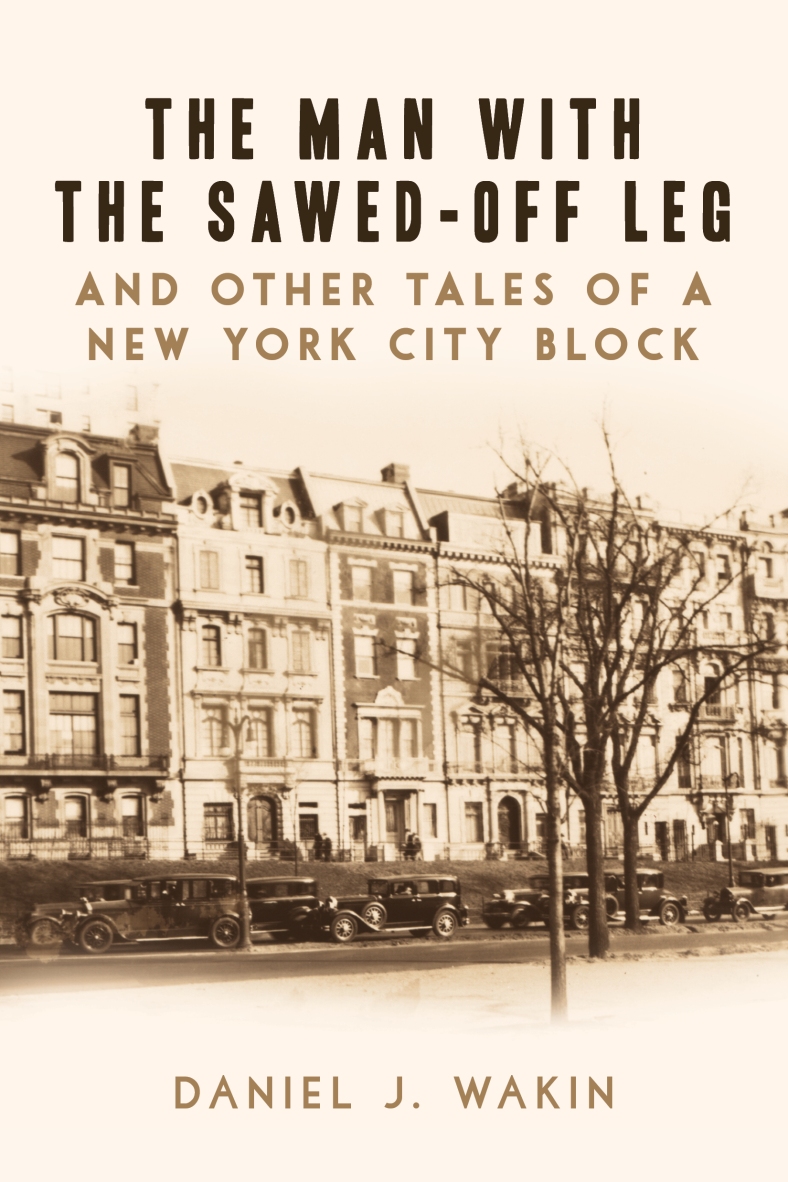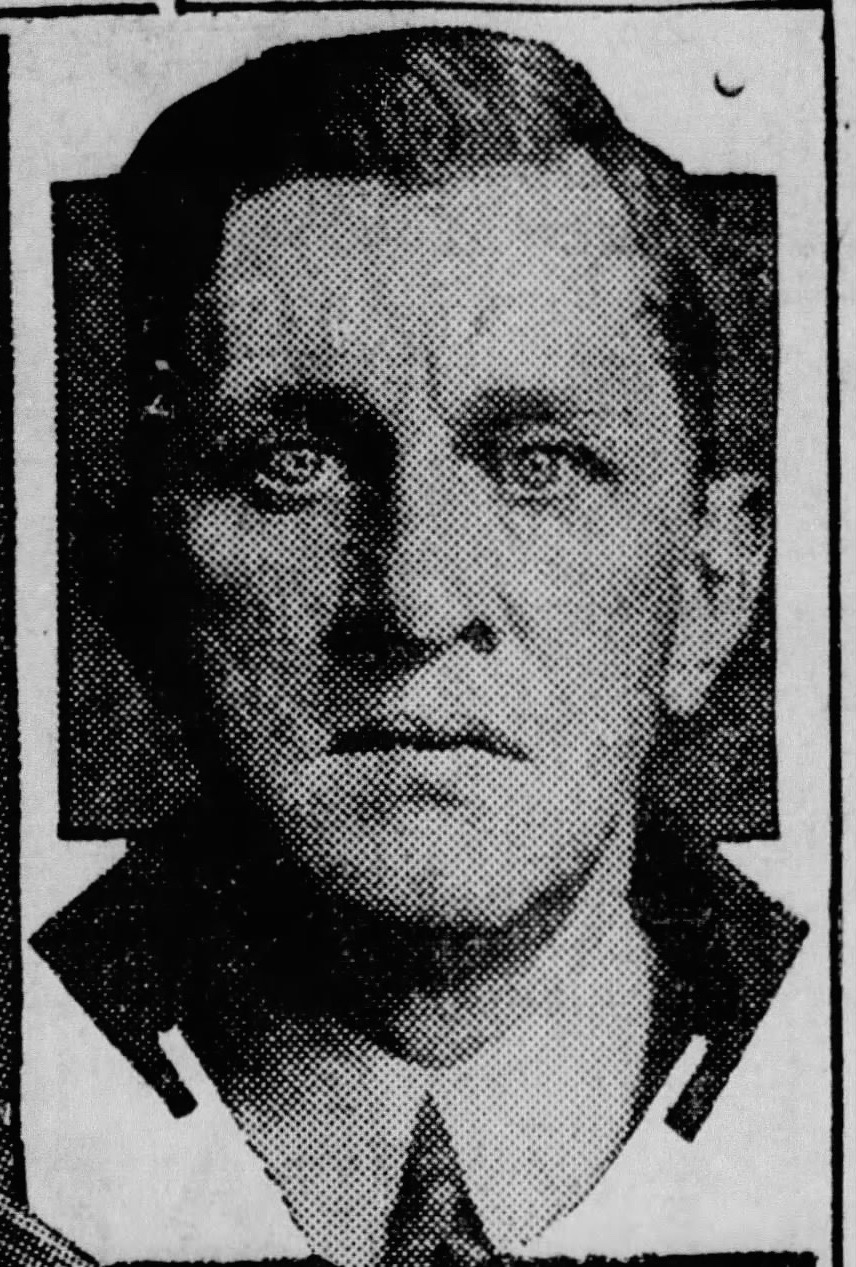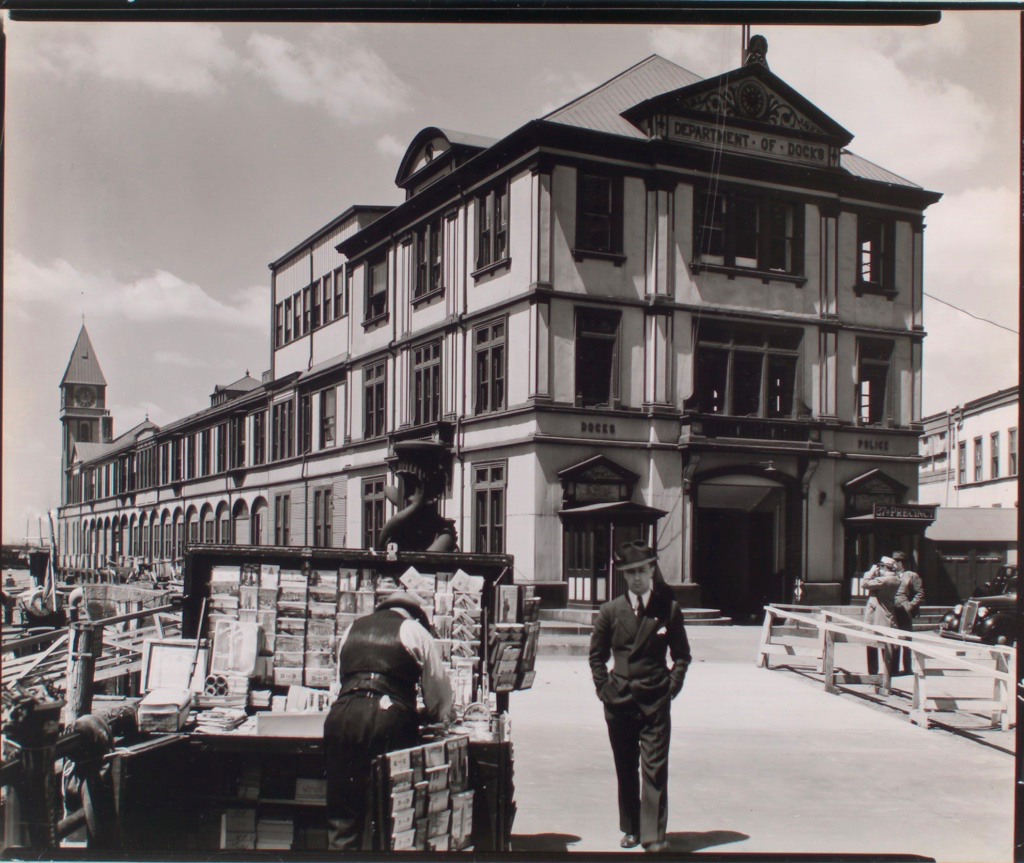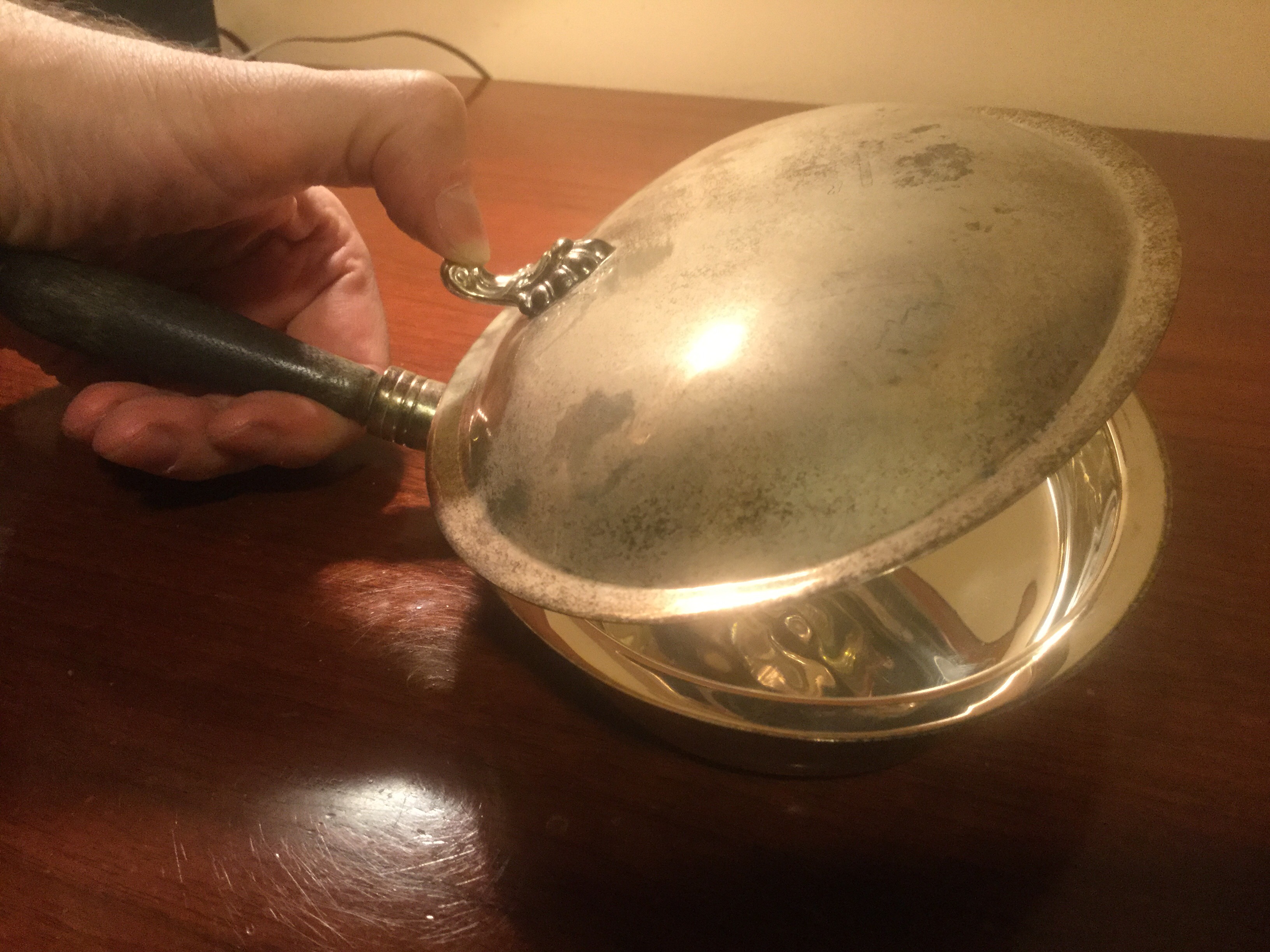
About this book
Every structure has a story, an external one and an internal one. The external story is the history of the building — who built it, when and why. The internal story traces the lives of the people who lived in the building. “The Man with the Sawed-Off Leg and Other Tales of a New York City Block” is about both, but mostly the people — an eclectic, fascinating and occasionally just ordinary bunch who lived in the buildings at 330-337 Riverside Drive over the past century. Continue reading “About this book”
New Edition Coming Soon
The paperback version of “The Man With the Sawed-Off Leg” is coming out in the fall of 2019, and it will be a brand new edition, containing wonderful additional information from sources that came to my attention thanks to generous readers since the hardcover book was published a little more than a year ago. It will definitely be new and improved.
Mystery Solved!
Several months ago, I received an email out of the blue from a man named Thomas Worsdale. It seems that “Man With the Sawed-Off Leg” had provided a key bit of family history. Mr. Worsdale said his cousin had tipped him off to the New Yorker story about the Rubel robbery and The New York Times article I had written about the Riverside Drive townhouses that included the story of the heist. He also learned about my book, bought a copy and read it, concentrating especially the parts about Bernard McMahon, the Irish gangster who helped mastermind the robbery.
“You see, Bernard McMahon is my great-uncle,” Mr. Worsdale wrote me. “We had always been told that he may have been involved in the Irish Mob and criminal activity in NYC, and we were told he died either in a car accident or a shooting.”
I spoke to his cousin, Marion Shanahan, who recounted similar impressions. She had heard Uncle Bernard just disappeared from family after 1930. The story she knew was that he died a violent death of some sort, perhaps for crossing the mob. One version had his body delivered to his mother’s doorstep rolled up in a carpet.
But how could I be sure that their Uncle Bernard was my Bennie the Bum, the mobster? Bernard McMahon is not exactly an uncommon man. I dug deeper and became convinced they were one in the same for the following reasons.
- Gangster Bernie used the names Dalton and Murray as aliases. The cousins told me that their great-uncle had a brother-in-law named Dalton and that a brother housed a lodger named Murray.
- Records for Uncle Bernie and Gangster Bernie put them in the same neighborhoods during the same years, and the 1915 census listed the uncle’s address as 439 W. 24th St., the same given to McMahon in news reports about the shooting of a jeweler.
- McMahon’s body in the Rubel story was identified in the morgue by a brother named John. Uncle Bernie had a brother named John.
- Photographic evidence.
Here is a picture of Uncle Bernie, provided by Mr. Worsdale, working as a bartender probably in his father’s tavern.

Here is mugshot of gangster Bernie

Look at the curve of the nostril, the cleft chin, the shape of the lips, the haircut (the only difference is that the part is on different sides; maybe one of the images was somehow reversed?) They are clearly the same man.
Thanks to Mr. Worsdale and Ms. Shanahan, some details of Bernard McMahon’s life have been fleshed out. Bernard was 5-foot-9, slender, blond and blue-eyed. He had two sisters and two brothers, dapper men who worked on the docks, in the fish market, behind the bar or behind the wheel. “The McMahons were an interesting family in that they stuck together through thick and thin,” Ms. Shanahan said.
Bernard’s parents came from County Monaghan in Ireland. His father, also Bernard, was injured in a trolley accident in 1919 and died in 1923. The accident led to a lawsuit which yielded the family several thousand dollars.
Post-Pub Updates: West Side Gangs Fight It Out in the ’30s

West Side Highway and Piers 95-98, looking west from the roof of 619 West 54th Street, Manhattan; By Berenice Abbott, from The New York Public Library Library Digital Collection (public domain)
Joseph “Big Joe” Butler. Charlie “The Jew” Yanowsky.
Forgotten now, those two men (along with Big Joe’s partner Robert “Farmer” Sullivan) headed the two most powerful factions of the gang that ran the rackets on Manhattan’s West Side docks and the blocks along them in the 1930s.
Neil G. Clark’s book “Dock Boss: Eddie McGrath and the West Side Waterfront” (Barricade Books, 2017) paints a detailed and gritty picture of their world. Neil got in touch when he saw the publication of MWSOL and kindly passed on some material, including the picture of Rubel heist figure Bernard McMahon that figures in a previous post here.
I bought Neil’s book (author solidarity!) and have gone through it now, and it provides some great back story about the milieu that the Rubel robbery gang swirled in. As he points out, the West Side, from Greenwich Village up through the 100s, was at the time largely a series of insular Irish immigrant enclaves, neighborhoods where unskilled men could find work on the docks. The solidly Irish makeup of the area kept the Italian Mafia at bay, and left it open for the loose knit group of mainly Irish criminals who controlled extortion, gambling and loansharking rackets and cargo heists. The crews were not hierarchical like the Mafia families, leading to more instability and hence more violence.
Neil establishes that the West Side members of the Rubel gang, including McMahon, John Manning, Joe Kress and the robbery expert Archie Stewart, were all members or associates of the Yanowsky faction. Madeline Tully, who ran the rooming house at 334 Riverside Drive where McMahon was brought with a self-inflicted gunshot wound to his leg and where he died, was a known quantity to the group, and had taken in Yanowsky’s people previously. Neil also contends that the machine guns produced by Manning and McMahon for the Rubel robbery came courtesy of Yanowsky himself. Kress, the Rubel crew’s car thief, had other Yanowsky credentials, having taken part with him in the hit of a Butler-affiliated gangster.

Department of Docks and Police Station, Pier A, North River, Manhattan By Berenice Abbott, from The New York Public Library Library Digital Collection (public domain)
That murder was part of a war that developed between the Yanowsky and Butler factions — a conflict that left dozens of men killed. In the end, the Butler people, by then led by Eddie McGrath and John Dunn, achieved dominance, wiping out most of the Yanowsky gang or benefiting from the jailing of the rest. One of the last to die was John Manning. As my book describes, Manning was mysteriously gunned down several years after the Rubel robbery on an East Harlem street, probably the result of a gang war or opposition to his effort to take over a pier on the West Side. Neil posits that he fell victim to the McGrath/Dunn campaign to wipe out Yanowsky’s crew.
I’m also grateful for Neil’s meticulous research, which clarifies the fate of John Hughes, who provided one of the escape boats that roared away from Bath Beach across Gravesend Bay with the Rubel gang and their cash after the robbery. Hughes was widely reported to have disappeared shortly after the crime, his fate never determined. However, a John Hughes linked to the Rubel case by investigators was arrested in New Jersey around that time, leading to some confusion about whether Hughes had really disappeared. Neil makes it clear that that John Hughes was a different man. His nickname was “Peck.”
Post-Pub Updates: Mysterious Relic at No. 330 Riverside Drive
A relic of a past world has emerged at 330 Riverside Drive.
The townhouse was bought around the turn of the last century by the baking powder magnate Robert B. Davis for himself, his wife Jennie and daughter Lucretia, know as Lulu. After Lulu’s parents died, she continued to live at 330 with her husband George Jephson, eventually moving out in the 1950s. Two Catholic institutions have owned it since, including the current occupant, Opus Dei, which uses it as a residence for priests and celibate men. The relatively few owners — and Opus Dei’s considerable financial resources — have ensured that the place is a kind of time capsule, remarkably similar to images from 1912. Some of the same furniture is even still there.
One of the residents is Brian Finnerty, an Opus Dei official who was very helpful to me in the writing of the book. Brian moved into the townhouse around 1995 and took notice of a round metal object, made up of two bowls with a hinge and a handle. The men back then used it to empty ashtrays. Smoking has since gone out of style in the house, but the object hung around.
Then came the move. Opus Dei is renovating, so everything inside had to be thrown out, sold off, stored up, or taken in at the men’s new quarters in New Jersey. Brian told me that as he was sorting through stuff, his eyes fell on the object and he began wondering both what it really was, and why it was there. He had always assumed it had some connection with the original owners. Now he really wanted to know. So he contacted Brenda Steffon, a descendant of the Davis family. Brenda had knocked on the door one day to take a look around and Brian kept her contacts. (Brian put me in contact with Brenda, and she was hugely helpful for me book, providing a cache of family archives.)
Yup, Brenda confirmed, the object was always in the house and she knew what it was: a bed warmer.
 “It’s now part of the history of the house,” Brian said. “It’s a link to the past.” It was proof, he added, that “The ghosts of the house are still there.”
“It’s now part of the history of the house,” Brian said. “It’s a link to the past.” It was proof, he added, that “The ghosts of the house are still there.”
These days, the ghosts are living behind plywood-covered windows. The major renovation is underway. The landmarked facade with be untouched but some changes inside will wound the hearts of preservationists. The beautiful birdcage-like elevator cab is going, the interior of the conservatory will be gutted and doors will seal off hallways leading to the open staircase. The reasons are all valid: handicapped access, a better life for the kitchen staff (the conservatory is off the dining room and near the kitchen) and fire codes. But – pangs.
Brian also pointed out an error in the book — the Opus Dei-linked business school is correctly called IESE, not IESI. Next edition!
A Photo of Bennie the Bum
Neil Clark, the author of “Dock Boss: Eddie McGrath and the West Side Waterfront,” got in touch when he saw the announcement of my book, “The Man With the Sawed-Off Leg and Other Tales of a New York City Block.” He also dealt with the Rubel robbery — a major part of MWSOL — in his account of waterfront gangsters, and was delighted to hear about his old historical pals from another source.
Neil kindly sent me some materials I had not seen. Here is a photo of Bernard “Bennie the Bum” McMahon, the man of the title. He died a gruesome death.

The Roots of Products
An extraordinary range of products still sold today were either invented, overseen or connected to the denizens of 330-337 Riverside Drive.

Lothar Faber of the Eberhard Faber pencil company lived in No. 335. Continue reading “The Roots of Products”
Marion Davies
W.R. Hearst bought 331 Riverside Drive for his sweetheart, Marion Davies. Here she is in the silent movie “The Patsy,” showing her considerable comedic gifts. Hearst pushed her into dramatic roles, considering them more fitting for the protege of a man of prominence. Shame, because she’s a natural comedienne.
Julia Marlowe
Julia Marlowe, one of the first owners of 335 Riverside Drive, captured the public’s attention as a leading actress and Shakespeare interpreter. E.H. Sothern was her acting partner and husband. The sing-song declamation evokes another era of acting.